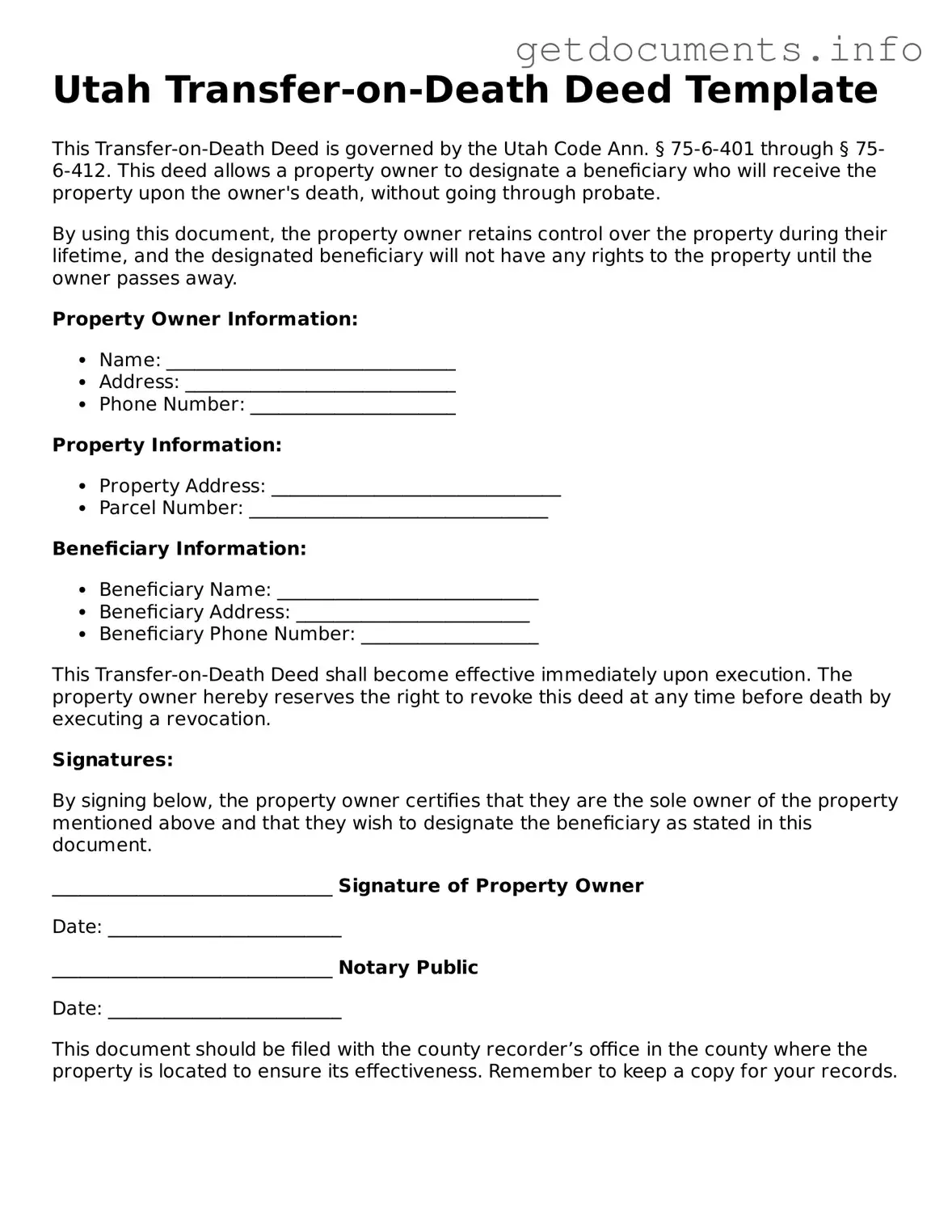Free Transfer-on-Death Deed Template for Utah
A Transfer-on-Death Deed is a legal document that allows property owners in Utah to transfer their real estate to designated beneficiaries upon their death, without going through probate. This form provides a straightforward way to ensure that your property is passed on to loved ones according to your wishes. To get started on securing your property transfer, fill out the form by clicking the button below.
Access Transfer-on-Death Deed Editor
